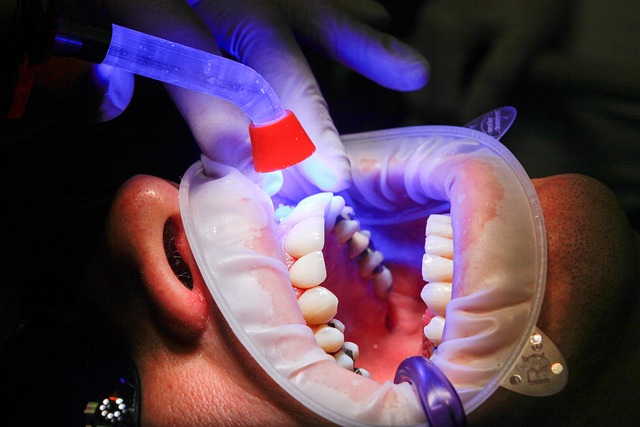Post-traumatic stress disorder (PTSD) is a mental health condition triggered by trauma, characterized by flashbacks, nightmares, and detachment from reality. Effective PTSD treatment includes psychotherapy like Cognitive Behavioral Therapy (CBT) and Eye Movement Desensitization and Reprocessing (EMDR), which help individuals manage symptoms, process traumatic memories, and regain control over their lives. Trauma-Informed Care (TIC) creates supportive environments, integrating physiological understanding and cultural sensitivity for healing. Building resilience through psychotherapy equips individuals with tools to confront trauma, regulate emotions, and improve well-being in PTSD recovery.
“Uncovering Paths to Healing: Exploring Psychotherapy for Trauma and PTSD offers a comprehensive guide to understanding and overcoming post-traumatic stress disorder. This article delves into the profound impact of trauma, highlighting symptoms that can hinder daily life. We examine various psychotherapy approaches, from Cognitive Behavioral Therapy’s structured techniques to Eye Movement Desensitization and Reprocessing’s innovative method. Additionally, we explore trauma-informed care, building resilience, and coping strategies for effective PTSD treatment.”
Understanding PTSD: Symptoms and Impact

Post-traumatic stress disorder (PTSD) is a complex condition that can significantly impact an individual’s daily life and overall well-being. It often develops after experiencing or witnessing a traumatic event, such as military combat, accidents, natural disasters, or severe injuries. The symptoms of PTSD can be diverse and may include intense flashbacks, nightmares, and rapid mood swings. Those affected might also experience severe anxiety, depression, and feelings of detachment from others and reality.
The impact of PTSD is profound, affecting not only an individual’s mental health but also their physical health and relationships. It can disrupt sleep patterns, impair concentration, and lead to avoidance behaviors, making it challenging to engage in daily routines and social activities. Accessing appropriate PTSD treatment, such as psychotherapy, is crucial for managing these symptoms and enabling individuals to reclaim control over their lives.
Psychotherapy Approaches for Trauma Recovery

Psychotherapy plays a pivotal role in the recovery process for individuals dealing with trauma and Post-Traumatic Stress Disorder (PTSD). Several evidence-based approaches have proven effective in helping people process traumatic memories, manage symptoms, and regain control over their lives. One prominent method is Cognitive Behavioural Therapy (CBT), which focuses on identifying and modifying negative thought patterns associated with the trauma. By challenging these thoughts and behaviours, CBT empowers individuals to develop healthier coping mechanisms.
Another powerful tool is Eye Movement Desensitisation and Reprocessing (EMDR), a therapy that helps the mind reprocess traumatic memories. It involves bilateral stimulation, such as side-to-side eye movements or taps, while the individual recalls the trauma. This process facilitates the integration of distressing memories into one’s overall memory network, reducing their impact and associated symptoms. EMDR has gained significant recognition for its effectiveness in PTSD treatment, offering a unique and sometimes rapid path to healing.
Cognitive Behavioral Therapy (CBT) Techniques

Cognitive Behavioral Therapy (CBT) is a highly effective technique in the arsenal of PTSD treatment. This approach focuses on identifying and modifying negative thought patterns and behaviors that contribute to trauma-related symptoms. By challenging unhelpful cognitions, CBT helps individuals reframe their experiences, reducing the power of distressing memories and triggers. Through structured sessions, patients learn coping strategies to manage anxiety, depression, and flashbacks effectively.
In CBT for PTSD, therapists often employ exposure therapy, where individuals gradually confront traumatic memories in a safe environment. This process enables them to process and re-contextualize these events, leading to reduced emotional reactivity. Additionally, cognitive restructuring techniques help patients replace negative beliefs with more adaptive ones, fostering resilience and improving overall well-being.
Eye Movement Desensitization and Reprocessing (EMDR)

Eye Movement Desensitization and Reprocessing (EMDR) is a well-regarded therapy approach specifically designed to help individuals process traumatic memories and reduce symptoms associated with PTSD. This unique method involves guiding patients through side-to-side eye movements while they focus on distressing memories, which helps desensitize them to the trauma. By reprocessing these memories, patients can gain new perspectives and reduce emotional intensity, leading to improved mental health.
EMDR therapy has been extensively researched and is recognized as an effective PTSD treatment by various professional organizations worldwide. Its non-invasive nature and ability to bring about significant changes make it a valuable tool for therapists working with trauma survivors. Through EMDR, individuals can work through their traumatic experiences in a safe and controlled manner, ultimately leading to healing and improved quality of life.
Trauma-Informed Care and Support Systems

Trauma-Informed Care (TIC) is a crucial approach in providing support systems for individuals dealing with trauma and Post-Traumatic Stress Disorder (PTSD). This care model recognizes that traumatic experiences can have lasting effects on an individual’s mental health and overall well-being. By adopting TIC, healthcare professionals create a safe and supportive environment that respects the unique needs of those affected by trauma.
In the context of PTSD treatment, TIC involves understanding the impact of trauma on the brain and body, ensuring cultural sensitivity, promoting safety, and encouraging self-determination. This approach emphasizes the importance of building strong therapeutic alliances, using evidence-based interventions, and integrating peer support to foster healing. By implementing these practices, mental health systems can effectively assist individuals in processing traumatic memories, developing coping strategies, and rebuilding their lives after a traumatic event.
Building Resilience and Coping Strategies

Building resilience is a key aspect of psychotherapy for trauma and post-traumatic stress disorder (PTSD). Through various therapeutic techniques, individuals learn to confront and process their traumatic memories while developing effective coping strategies. This involves cultivating emotional regulation skills, such as mindfulness and relaxation techniques, to manage the intense emotions that can arise when dealing with past traumas.
Psychotherapy provides a safe space for individuals to explore and understand their experiences, helping them to reframe negative thought patterns associated with trauma. By building resilience, individuals gain the ability to navigate challenging situations and respond to stressors in healthier ways. This process empowers them to take control of their lives, fostering a sense of empowerment and improved overall well-being as they learn to cope with and recover from PTSD.
